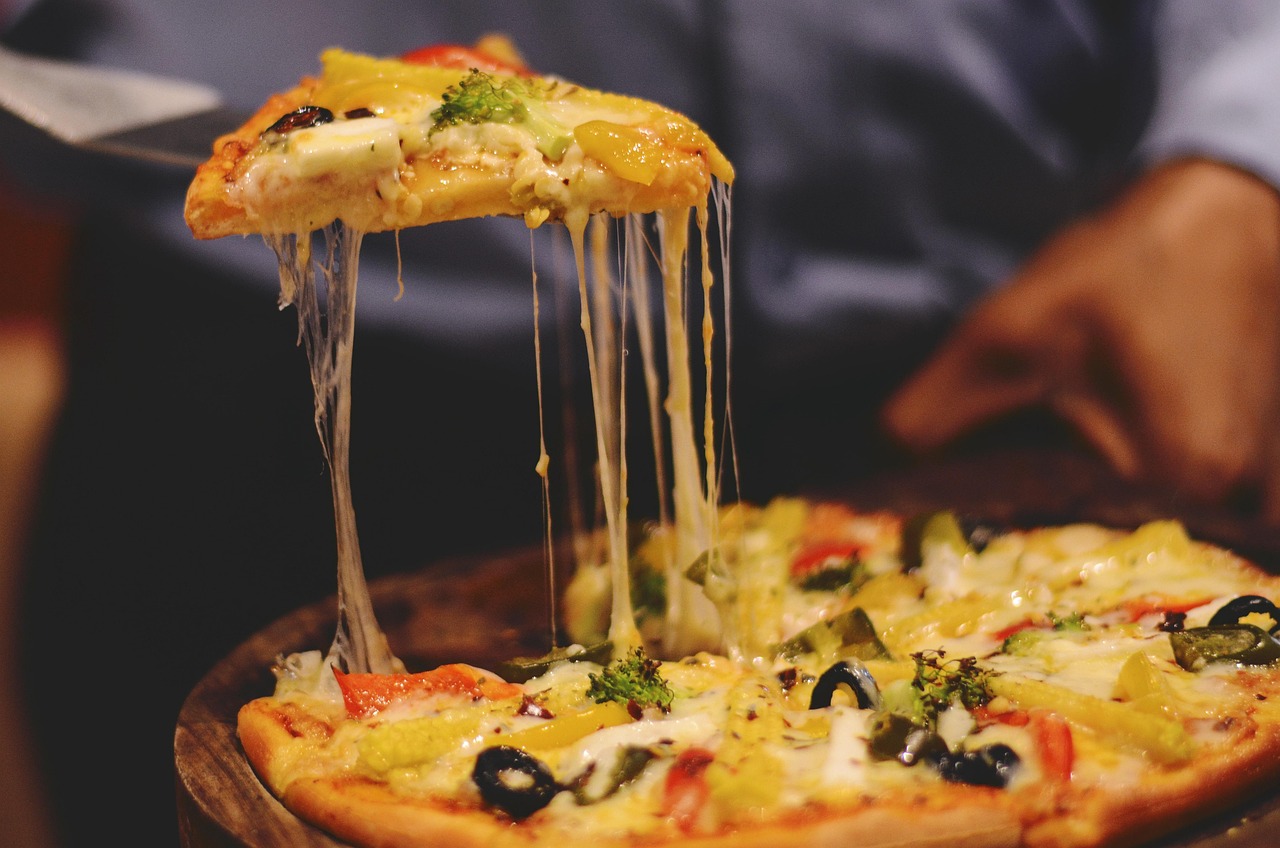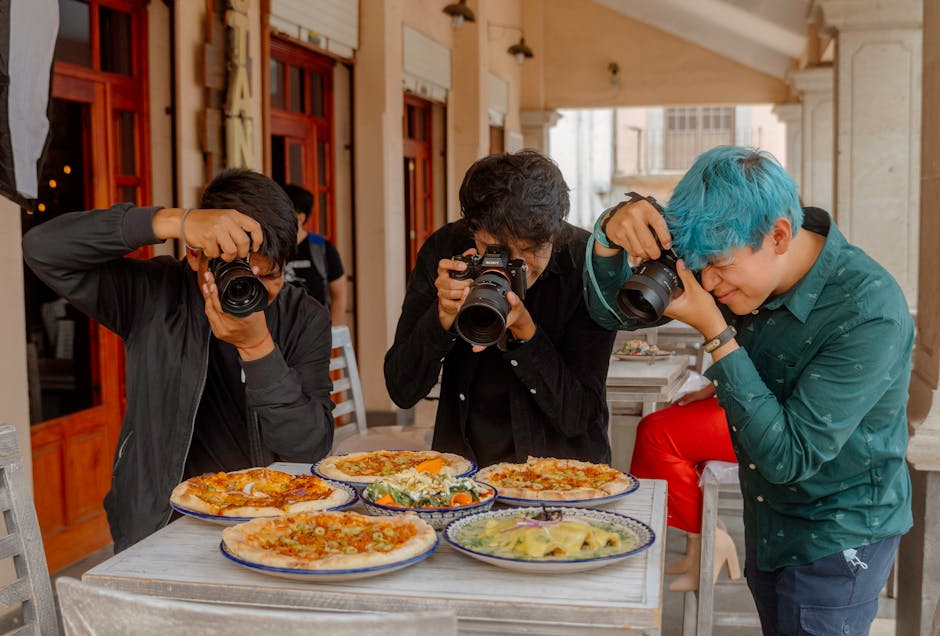Food photography is far more than just capturing an appetizing dish—it’s about storytelling, evoking emotions, and creating visual experiences that make viewers crave what they see. As London’s culinary scene continues to thrive, the demand for high-quality food photography services in London Ontario has never been higher. Whether you’re a restaurant owner, food blogger, or culinary brand, understanding the different styles of food photography can help you create compelling visual content that resonates with your target audience.
Why Professional Food Photography Matters
Before diving into specific styles, it’s important to understand why investing in quality food photography is crucial for your culinary business.
First Impressions Matter: Potential customers often decide where to dine based on the photos they see online. Professional photos can make your dishes look irresistible and entice diners to visit your establishment.
Brand Identity: Consistent and high-quality images help in creating a strong brand identity, making your restaurant or food business stand out in a competitive market.
Increased Engagement: Eye-catching food photos significantly increase engagement on social media platforms, leading to more likes, shares, and comments that expand your reach.
Enhanced Credibility: Professional photography conveys a sense of professionalism and attention to detail, enhancing your restaurant’s credibility in the eyes of potential customers.
Boosted Sales: According to Deliveroo, menu items with images see up to a 6.5% increase in sales compared to those without visual representation6.
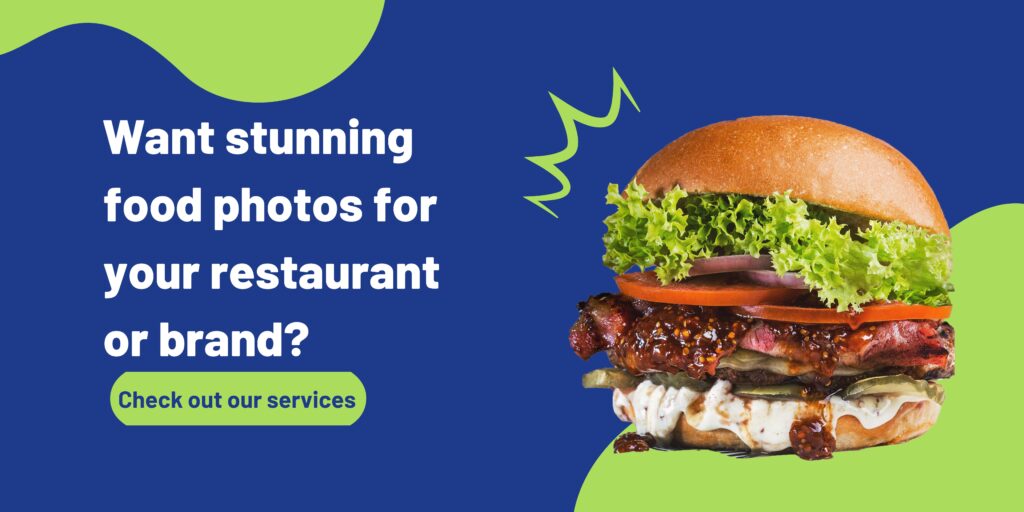
Dark and Moody Style
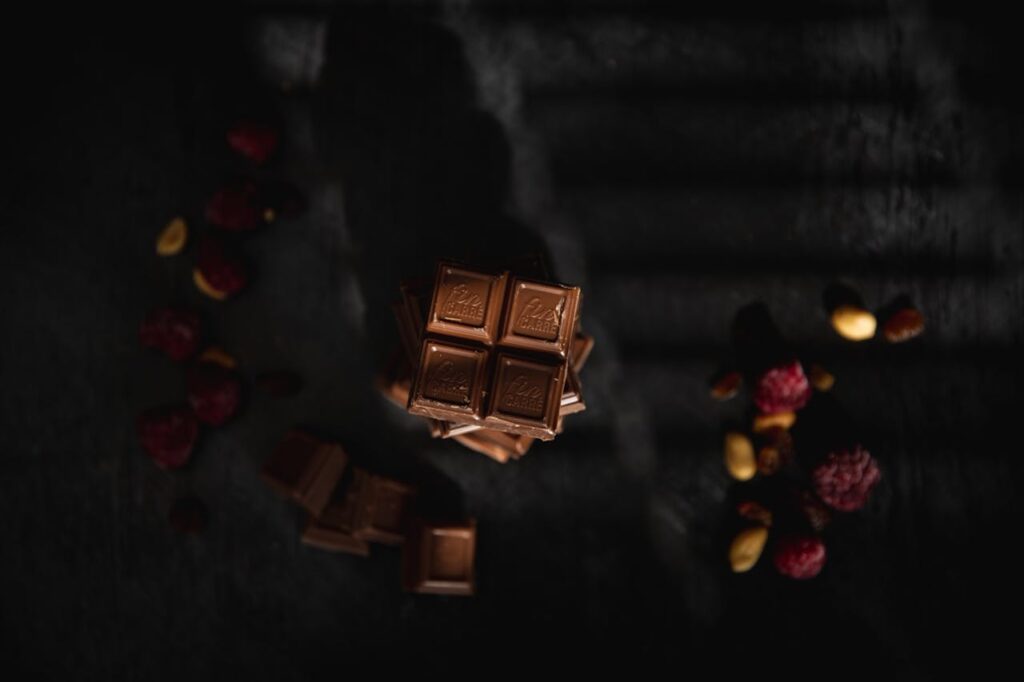
The dark and moody style has gained tremendous popularity in recent years, particularly for high-end restaurants and artisanal food brands seeking to create an atmosphere of sophistication and depth.
Characteristics and When to Use It
This style features deep shadows, rich contrast, and a limited color palette that creates a dramatic, intimate atmosphere. Dark backgrounds like slate, charcoal boards, or deep-colored fabrics help food elements pop dramatically against the shadowy environment.
The dark and moody approach works exceptionally well for:
- Rustic, hearty dishes like stews and roasts
- Craft cocktails and fine wines
- Chocolate desserts and coffee
- Evening dining experiences
- Winter seasonal campaigns
How I Create Dark and Moody Food Photography
In my London studio, I achieve this look by using carefully controlled lighting. I position the food near a window but block additional light sources to create those beautiful, dramatic shadows that define this style. I use natural light coming from one direction (side or back) and often employ black foam boards to create negative fill5.
For post-processing, I slightly decrease brightness, increase contrast, and selectively adjust saturation to allow key ingredients to stand out while maintaining the moody atmosphere. The goal is to create images that feel intimate and luxurious—perfect for establishments wanting to convey sophistication.
Bright and Airy Style
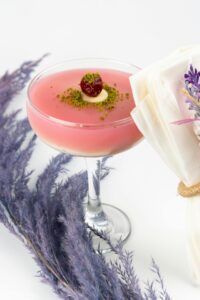
At the opposite end of the spectrum is the bright and airy style—a light-filled, cheerful approach that creates a fresh, inviting mood perfect for cafés, breakfast spots, and summer menus.
Characteristics and When to Use It
This style features high-key lighting with minimal shadows, bright (often white) backgrounds, vibrant colors, and clean compositions. It creates a sense of freshness and accessibility that immediately draws viewers in.
The bright and airy style works best for:
- Breakfast and brunch dishes
- Fresh salads and health foods
- Light desserts and pastries
- Cafés and bakeries
- Spring/summer seasonal campaigns
How I Achieve Bright and Airy Photography
When shooting in this style for my London clients, I position food near large windows with diffused natural light—the cornerstone of successful food photography1. Unlike the dark and moody style, I use white reflectors or foam boards to bounce light back onto the shadow side of the food, reducing contrast and creating that characteristic airy feel6.
I typically shoot on light surfaces—white marble, light wood, or pale linens—and keep props minimal in neutral tones. For post-processing, I increase brightness, maintain high color accuracy, and often add a touch of warmth to create that inviting, sun-filled ambiance that makes viewers feel like they’re sitting in a light-drenched café.
Minimalist Style
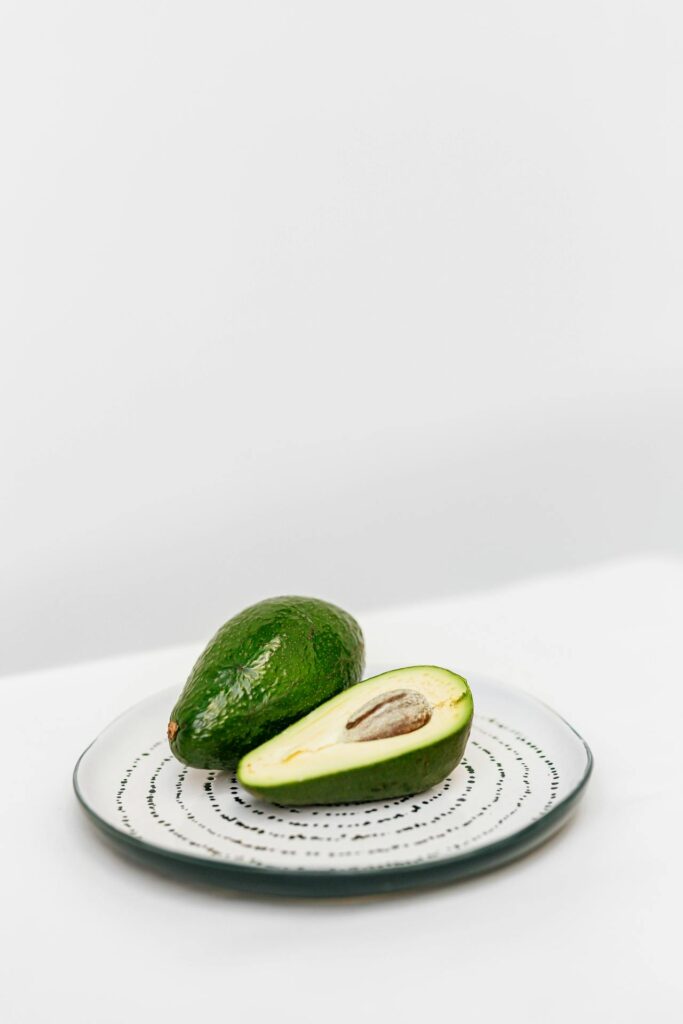
The minimalist style in food photography emphasizes clean lines, negative space, and letting the food speak for itself. This approach has gained popularity with modern, concept-driven restaurants and premium food brands.
Characteristics and When to Use It
Key features include abundant negative space, a single-focus subject, limited color palette, few or no props, and precise composition. This style creates a sense of elegance and sophisticated simplicity.
The minimalist approach works well for:
- Fine dining establishments
- Single-ingredient features
- Premium food products
- Modern restaurant menus
- Editorial food features
Creating Effective Minimalist Food Images
In my experience with London’s cutting-edge restaurants, minimalist food photography requires meticulous attention to detail. I typically use a simple background—often white, black, or a solid neutral tone—and position the food with careful consideration of composition principles5.
The lighting should be clean and even, with soft shadows that define the food’s shape without creating drama. This style works particularly well when you want to highlight the intricate details of a dish without distractions. When staging minimalist shots, I focus on choosing a neutral environment that allows the food to be the star1.
Post-processing is subtle, emphasizing clarity and clean lines rather than heavy effects. The key is to let the food’s natural beauty and form take center stage—a philosophy that many top London food photographers embrace.
Rustic/Natural Style

The rustic or natural style evokes a sense of homemade comfort, tradition, and authenticity. This approach feels organic and uncontrived, often telling a story of how the food was prepared or served.
Characteristics and When to Use It
This style features natural, often imperfect arrangements, textured backgrounds and surfaces, vintage or handmade props, and sometimes action shots showing hands or preparation. Visible crumbs, drips, or steam add to the authentic feel.
The rustic/natural approach works best for:
- Farm-to-table restaurants
- Homestyle cooking and bakeries
- Family restaurants
- Cookbooks and recipe blogs
- Comfort food and traditional cuisine
How I Create Rustic Food Photography
When I’m shooting in this style for London gastropubs or traditional eateries, I embrace the beauty of imperfection. Rather than meticulously arranging every element, I allow for natural placement and even welcome some “mess”—a drizzle of sauce or scattered herbs.
I use textured surfaces like weathered wood boards, slate, and vintage linens as backgrounds. Props play an important role—vintage cutlery, ceramic plates with character, and ingredients in their raw form all contribute to the storytelling. I often include human elements like hands reaching for food to create a sense of presence and action5.
The key to rustic photography is styling the entire shot, not just the food itself. The surrounding environment helps tell the complete story of the dish and the experience it offers1.
Commercial/Advertising Style
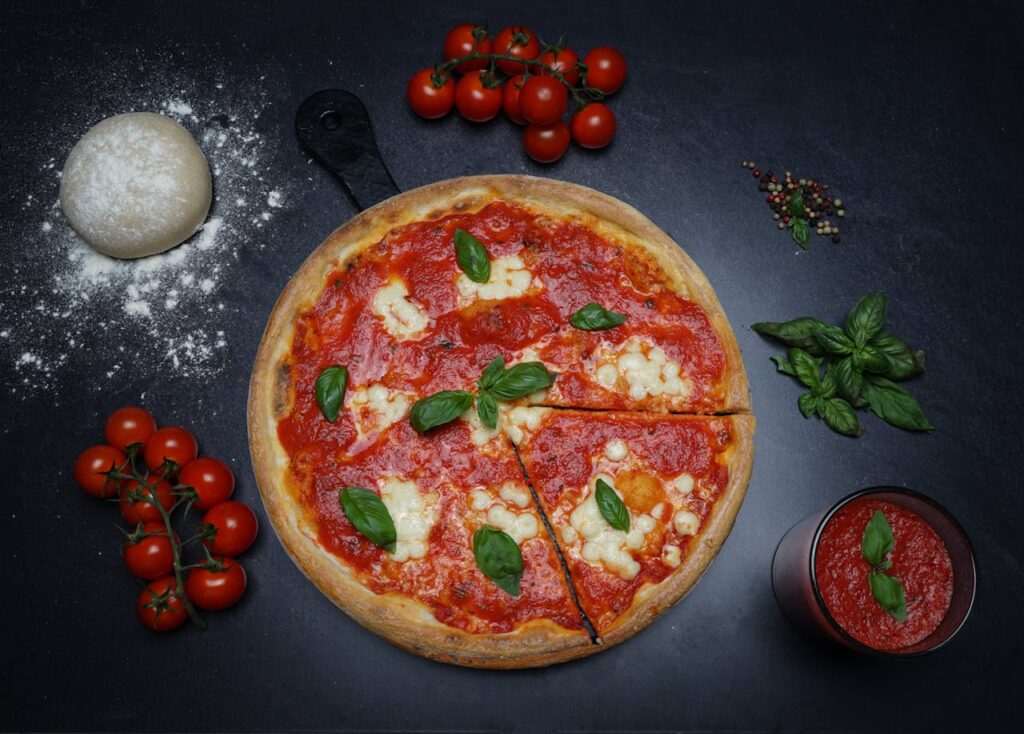
The commercial or advertising style is highly polished, perfect, and designed to make products look their absolute best. This approach is essential for packaging, advertisements, and large food brands.
Characteristics and When to Use It
This style features perfect, idealized presentation, high technical precision, vibrant colors, and strategic lighting to highlight texture and form. It creates a sense of desirability and perfection rather than authenticity.
The commercial/advertising approach works best for:
- Food packaging
- Billboard and print advertisements
- Fast-food chains and national food brands
- Product catalogs and menu boards
Professional Techniques for Commercial Food Photography
When I work on commercial projects for London food brands, I typically shoot in a controlled studio environment where I can precisely manage lighting and composition. This style often requires artificial lighting setups with multiple light sources to perfectly highlight every aspect of the food.
Commercial food photography frequently involves specialized food styling techniques to ensure the food looks perfect throughout extended shooting sessions. While these techniques create images that may not represent how the food actually looks when served, they create the idealized version that makes consumers want to buy the product.
Post-processing plays a significant role in commercial food photography. Colors are enhanced for maximum vibrancy, imperfections are removed, and sometimes elements are composited from multiple shots to create the perfect final image. Many experienced food photographers in London, like Stuart West, are known for their exacting standards and perfectionism in achieving these commercial-quality results2.
Technical Considerations for Food Photography
Lighting: The Foundation of Great Food Images
Regardless of which style you choose, lighting is perhaps the single most important element in food photography. Natural light provides the most flattering illumination for food, particularly when it comes from behind or the side of your subject5.
When shooting with natural light:
- Find the best light source by moving around—don’t feel confined to your kitchen5
- Turn off overhead lights to avoid color casts5
- Use diffusers to soften harsh sunlight
- Experiment with reflectors to bounce light onto shadow areas6
If natural light isn’t available, I use artificial lighting designed to mimic natural light, usually with softboxes positioned to create the same effect as window light.
Finding the Perfect Angle
Different dishes look best from different angles, and experimenting with multiple perspectives will help you find the most flattering view5:
- Overhead shots work well for flat dishes, bowl foods, and table spreads
- 45-degree angles showcase layered foods and drinks effectively
- Straight-on shots highlight the layers in sandwiches, burgers, and tall desserts
I always recommend taking photos from multiple angles so you can select the most appealing perspective during editing5.
Composition and Styling
Strong composition transforms good food photos into great ones:
- Minimize clutter by removing elements that don’t contribute to the photo5
- Create depth by using background, middle ground, and foreground elements
- Style the entire shot, not just the food itself1
- Choose a neutral environment that complements rather than competes with your food1
- Use negative space strategically to direct attention to your subject
Food Photography Services in London
London boasts some of the world’s finest food photographers, each with their own specialties and styles. When seeking food photography services in London, consider these factors:
What to Look for in a Professional
- Portfolio diversity: Can they execute different styles based on your needs?
- Technical expertise: Do they understand lighting, composition, and food styling?
- Industry experience: Have they worked with businesses similar to yours?
- Post-production skills: How do they handle editing and delivery of final images?
Benefits of Hiring Local London Photographers
Working with food photographers based in London offers distinct advantages:
- Local knowledge: Understanding of London’s culinary scene and aesthetic trends
- Convenience: Easier to arrange in-person meetings and shoots
- Network connections: Relationships with local food stylists and prop stylists
Notable Food Photographers in London
London, Ontario, boasts talented food photographers who serve the city’s vibrant culinary scene.
Atomic Pixel: Known for their creative approach to visual content, Atomic Pixel specializes in photography and video marketing for local businesses. Their expertise in product photography and storytelling makes them a strong choice for restaurants and food brands looking to elevate their marketing efforts.
Lens Vibrance: As a local business, Lens Vibrance focuses on professional food photography tailored to restaurants, cafés, and food brands. With a commitment to personalized service, we deliver high-quality visuals that bring culinary creations to life. Our flexible packages and fast turnaround times ensure your brand stands out in the competitive market.
Final Thoughts
The style of food photography you choose dramatically impacts how audiences perceive your culinary creations. Whether you’re drawn to the dramatic contrasts of dark and moody photography, the fresh appeal of bright and airy images, the elegant simplicity of minimalist shots, the comforting authenticity of rustic style, or the polished perfection of commercial photography, each approach tells a different story about your food.
As a professional offering food photography services in London, I encourage you to consider not just what your food looks like, but what emotion and experience you want to convey through your images. The most effective food photography doesn’t just show what a dish looks like—it makes viewers feel what it would be like to taste it.
Remember, in the competitive world of food and hospitality, compelling visual content isn’t a luxury—it’s an essential ingredient for success. By understanding and implementing these different photography styles, you can create a visual identity that enhances your brand and drives engagement with your culinary offerings.
For exceptional food photography services in London that can bring these styles to life for your business, consider reaching out to established professionals who understand both the technical aspects of photography and the unique character of London’s diverse food scene4.
You Might Also Like:
- 5 Essential Tips for Small Businesses to Nail Product Photography in London, Ontario
- How to Use Visuals to Enhance Your Brand
- Social Media Marketing for Small Businesses
- Mastering Content Calendars: A Guide for Small Businesses
- Master Product Photography with Your Smartphone: A Comprehensive Guide
- Small Business Photography Hacks: Create Stunning Product Images on a Budget


